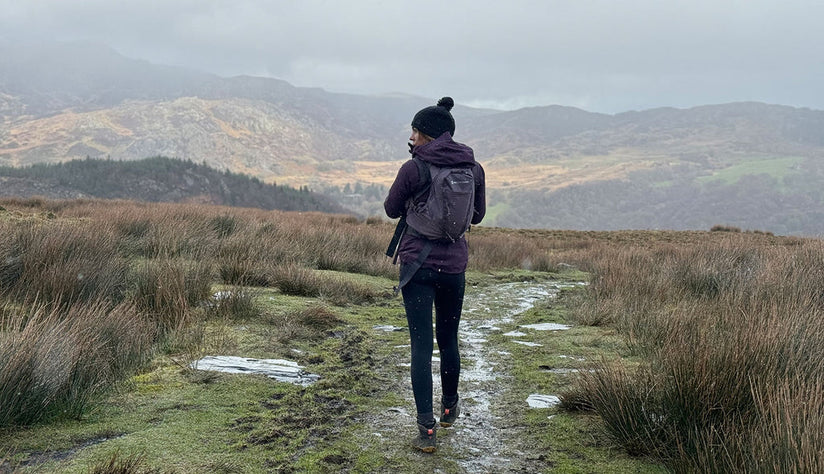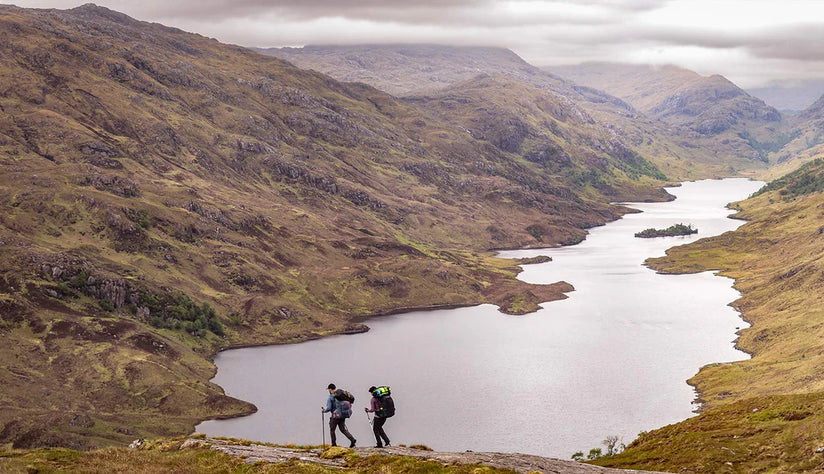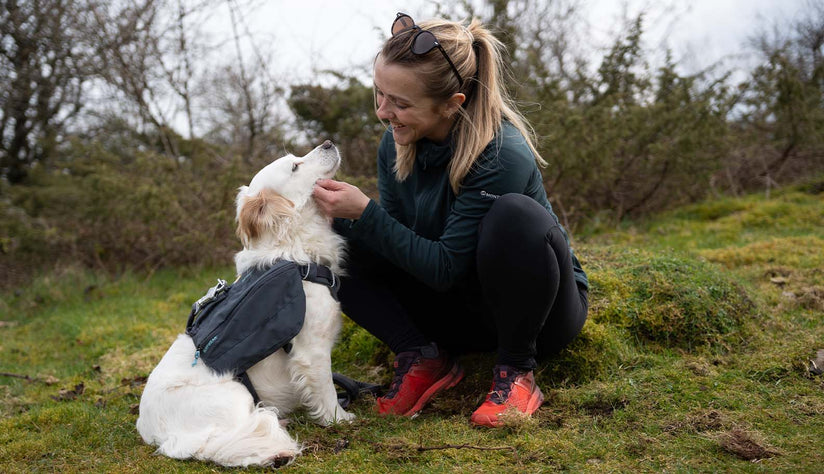In the past decade, fastpacking has gone from a totally unknown activity to the new favourite way to take on the mountains. With a fast and light philosophy at its core, it is perfect for adventurers looking to take on longer distances at pace - the chance to do so as efficiently as possible.
Who better to tell us more than pioneering #TeamMontane athlete Jenny Tough? Having taken on 6 of the world’s mountain ranges, solo and unsupported, she knows only too well what fastpacking involves. Keep reading to find out exactly how fastpacking differs from hiking, as well as Jenny’s essential packing tips and advice for anyone else eager to take on a fastpacking adventure for themselves…

What is fastpacking?
Fastpacking is a unique way of moving through the outdoors that involves a combination of running, hiking and camping. It requires great fitness, immense grit, and very robust fueling and layering strategies. However, there are aspects of fastpacking that will help inform and hopefully improve the way you hike in our natural spaces.
The line between hiking and fastpacking is a little fuzzy, and is as much a philosophy as anything else. To me, fastpacking is all about embracing ultralight, minimalist kit philosophies, and moving fast and efficiently. There is still a big place in my heart for a pleasurable hiking trip now and then, filling a bigger bag with more comfortable items to enjoy time in nature and not worry about pushing my legs for a change. The fastpacking philosophy certainly informs these trips, though it manifests itself in a more subtle way.
My early experiences of long-distance hiking involved packs that were at least half the size and weight of my own body, and required some form of an Olympic weightlifting move to lift from the ground onto my back. Despite the teetering luggage towering above the back of my head, I found my passion in pursuing big days. I was always excited to see how far and fast I could move through mountain environments.
Thankfully, Montane clothing and equipment is perfectly designed for this style of exploring, and for my Run the World project to run solo and unsupported across a mountain range on every continent, I thankfully used a fastpacking setup that was a mere fraction of my early pack sizes. This lightweight equipment allows me to pursue high mileage but, perhaps more importantly, it makes movement incredibly comfortable and fun. Unencumbered by massive luggage on my back, I was able to explore more gnarly trails and find my flow as I would on a normal trail run.
The Basics
However you choose to do it, fastpacking principles can be applied to get more out of your hikes:
Take as little as possible.
Ensure what you do take is versatile.
Think about layering.
Match your kit to the environment and conditions.
Fastpacking is all about minimalism. On one of my 21-day, 900km fastpacks across the Canadian Rockies, there were no superfluous items in my pack (aside from a camera, of course). Every single item had a crucial purpose to my survival - no ‘desert island luxuries’. This had the added benefits of making it easier to push harder for longer as well as reducing stopping time every day.
The same principle can be applied to any hiking trip to help keep pack weight to a minimum. Whilst my approach is usually 'as light as possible without compromising durability', a good way to achieve the same result when hiking is to ensure your kit is versatile. Think the likes of the Montane Terra Pants (or the female equivalent - the Montane Women's Terra Ridge Pants), which have ventilation zips, tough where they need to be, and are wind-resistant. These features make them usable in a wide range of terrains and conditions and, when supplemented with day-specific kit like waterproofs or insulation, will form a cohesive and resilient layering system.
A good selection of the types of kit I use on my mountain traverses can be found here. In doing so, you'll be able to maintain a comfortable pace for longer, getting the most out of your day!
Fuel
Here are a few fueling basics that are good to be mindful of on the move…
Fuel = energy = miles underfoot.
Little and often for big miles!
Slow-release energy prevents bonking
Refueling after a big day aids recovery
Generally, fuelling for fastpacking is quite different from hiking. If the objective is to keep moving as fast as possible all day, it’s not usually possible, or at all pleasurable, to take a full meal during the day. Instead, small and frequent fuels - and something you can inhale on the go - will keep you from bonking or collapsing in GI distress.
Of course, hiking is generally a lot more relaxed, but the same principle can be applied - regular fuelling can help maintain energy levels and increase miles underfoot. TRIBE Infinity Energy bars are an excellent choice for this as they release energy slowly and are gluten-free. Having said that, if I am anticipating a big climb, some quick-release energy can be very welcome, so a TRIBE nature bomb 15 minutes before the hard work starts can be VERY welcome! The key is not relying on this fast-release energy. I try to keep to a schedule of ingesting a small snack every hour, and then enjoy a large meal at camp in the evening.
Route Choice
Dreaming up routes is very much part of the excitement and enjoyment of being in the outdoors. Here a few initial takeaways on this aspect of fastpacking:
Match your aspirations to your capabilities.
Dream big, and embrace the challenge!
Plan B's can easily become Plan A's, so it's worth putting time into ensuring they work.
At any given time, there are always at least a couple of tabs open on my desktop exploring a new area that I want to discover! While the UK has no shortage of incredible trails and known challenges that are all great trips to check off, I am a big advocate of adventure as a creative pursuit.
Designing your own route that suits your needs, abilities, and logistical parameters is a fun part of the adventure, and will also help you familiarise yourself with the region beforehand. Using established trails is a great way to learn skills and ensure a good day out, but part of the nature of fastpacking is setting a target that will truly challenge you. Therefore, a useful strategy I always utilise is to create routes that have ‘plan B’s’ installed, just in case I don’t make it for some reason.
Packing Essentials
In fastpacking, the less you carry the further you travel and the faster you get there. Ultimately fastpacking is all about finding the balance between efficiency and utility. It is important to ensure your kit remains lightweight without compromising safety, but also remember a modicum of comfort - used sparingly and strategically - will help you perform.
As mentioned previously, I tend to follow the rule that everything in my (preferably 25-30l) pack should fall into either: something edible, something to keep me alive, or a camera. The specific items will change between climates, but my standard packing list looks like this:

*Fully loaded with food and water, my pack can weigh around 10kg. That extra weight goes through my legs and feet, adding considerable strain bounding down a mountainside. Trekking poles spread the load, making your arms do some of the work. **Duct tape and ibuprofen.
Feeling inspired?
For those seeking more helpful fastpacking advice from Jenny, take a look at her how to fastpack video. If all this chat of fastpacking has got you eager to take an adventure on for yourself, check out our fastpacking kit to get started.
















